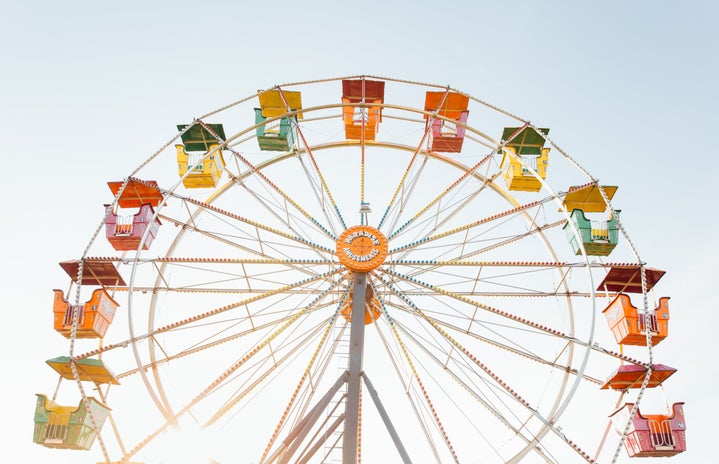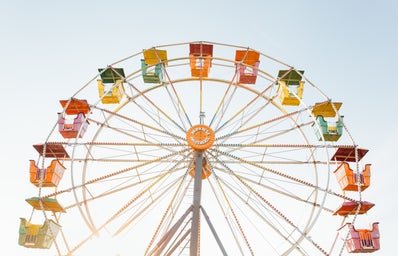The domestic cat is one humanity’s favorite creatures. People love their sleek faces, their fuzzy bodies, and their cute mannerisms. Cat lovers have taken over the internet so much that it may surprise you to learn that there are many other creatures with similar cuteness factors. Prepare to have your eyes opened and your minds blown; here are six animals that resemble cats in all their glory but are something else entirely.
1. Civet
Civets are sleek animals with long bodies and short legs that are found in Africa and Asia. They are more closely related to animals like the mongoose than actual cats. In Indonesia they are known as the Luwak, and are famous for eating coffee cherries and, umm… defecating the beans. Coffee made from these beans is known as Kopi Luwak and is one of the most expensive drinks on the planet (you might remember it from the 2007 film ‘The Bucket List’). High demand for the drink has resulted in extreme and inhumane practices, including caging wild civets and force-feeding them coffee cherries. Thankfully many organizations are dedicated to improving conditions for the coffee-munching creatures, but there’s still a long way to go.
2. Binturong
This round cuddly creature is not only the cutest combination of teddy bear and cat on earth (hence its nickname — the bearcat), it is also the only Old World mammal with a prehensile tail. The binturong can use this tail to help it climb, but it loses strength once the animal reaches maturity. The binturong is a resident of Southeast Asia, where it searches the nighttime rainforest for foods such as fruit and small animals. When it walks on the ground it does so with the paws turned inwards, resulting in a bear-like amble. Perhaps the strangest feature of all, a binturong smells just like buttery popcorn, a trait caused by a compound found in their urine. Yum… wait no, yuck.
3. Genet
These little guys weigh only 4 and a half pounds, if you can believe it. The genet is a highly acrobatic mammal from Africa and Southern Europe. They have sleek bodies and semi-retractable claws, making them adept at hunting among tree tops as well as the ground. Genets have almost magical flexibility and are able to squeeze their entire bodies through any opening big enough for their heads. Loose joints allows them to “flow” along the ground like snakes when hunting. They were once kept by Europeans as rat control, though they were eventually overtaken by cats in terms of popularity.
4. Mink
These small weasel relatives do not look much like cats aside from their furriness. Indeed, minks are more like otters in looks and behavior, but they have one undeniably feline feature; a happy mink will purr! Don’t go trying to pat one though — minks are still mostly wild animals and do not make good pets as adults, even when raised from birth. Mink fur has long been associated with glamour and richness, and today many fur-farms raise minks for their pelts, unfortunately. In the wild minks are typically found with dark brown fur on their backs that fades toward their bellies. Farmed minks have been bred to have a much wider variety of colors, including fanciful ones like Pastel Cross, Topal, and Palomino.
7. Fossa
Imagine a cross between a monkey and a cougar and you have the largest carnivore in Madagascar, the fossa (pronounced foo-sah). Fossa are about five feet long, but half their body length is made up of their long tail. Short legs and retractable claws give them the agility to climb through the jungle chasing their favourite prey: lemurs. They are not commonly seen by humans and little is known about them today. They are also widely considered by locals to be bearers of bad luck. Legend says that they can contract their pupils entirely, so that their eyes become blank amber orbs. While these claims are unproven, it is certain that the fossa has many unique features that only time and careful study will show.
8. Quoll
The Quoll is a cute little marsupial from Australia and New Guinea. Quolls are nocturnal creatures, and though classified as omnivorous most of their diet is made up of meat. There is a movement in Australia to promote Quolls as pets instead of cats, given that cats are an invasive species in Australia. Quolls have calm personalities when tame and are not messy creatures. Conservationists hope that by having greater numbers of domestic Quolls the species will be protected and ecological damage by feral housecats would be lessened. Not all professionals agree, but if it means the chance to have a cuddly Quoll of your very own, no one is going to complain too hard.
Photo Credits: www.macmillandictionary.com, www.javalush.com, animals.sandiegozoo.org, tinycards.com, animalspot.net, a-z-animals.com, thedodo.com

